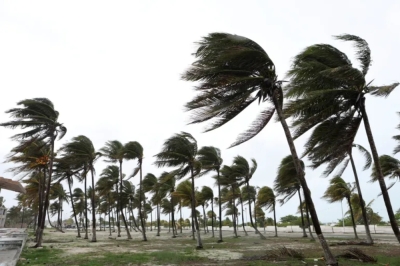
Quick Assessment of the Geo-Economic Baseline Scenario in the Israel-Palestine Conflict
Western leaders are publicly expressing support for Israel but behind closed doors, they are working towards a temporary resolution to the conflict.
These efforts are motivated by the need to mitigate adverse geopolitical consequences, preventing potential exploitation of the Middle East conflict by China and Russia. Additionally, policymakers are also focusing on ensuring internal political stability within their own countries. They are keen on protecting their economies from potential adverse effects that may arise due to the broader geoeconomic implications of the conflict.
The price movements in the oil market at the conflict's onset indicate that market participants, including financial institutions, have factored in the baseline scenario. This reflects a consensus view that the impact on the global economy would be minimal, especially if other oil producers offset any lost Iranian oil barrels using the existing spare capacity. In this scenario, the current conflict essentially mirrors past events, with Israel temporarily occupying part of Gaza and tighter enforcement of US sanctions on Iran’s oil.
In the event of the downside scenario materialising, where the conflict escalates to Israel's northern borders with Lebanon and evolves into a proxy war between Iran and Israel, the economic ramifications would be substantial. Under this scenario, the escalation could lead to a surge in oil prices ranging from 10% to 40%, contingent upon the scale of the conflict expansion and the involvement of various players.
A shock of this magnitude in the oil market could disrupt global efforts to stabilise prices, leading to a worldwide inflation rate surpassing 7% in the upcoming year. In the United States, attaining the Federal Reserve's 2% inflation target would prove elusive, compounded by a looming $2 trillion budget deficit driven by factors such as an ageing population and escalating healthcare and interest expenses. If this trend persists, the deficit could surpass defence spending by 2025, reaching 18% of GDP by 2028.
In Europe, particularly in Germany, these developments might exacerbate the existing cost-of-living crisis and deplete essential fiscal buffers. Germany, as the powerhouse of the European economy, faces significant challenges. Any additional shocks in the global market are expected to severely impact its manufacturing sector, already strained due to the ongoing restructuring of the global geo-economic order.
For now, the most likely scenario is the baseline one. Deviating from this path could incur substantial costs for the global economy, particularly for certain Western developed nations. If Iran were to close or disrupt the crucial Strait of Hormuz, responsible for one-fifth of the world's daily oil supplies, the spare production capacity might not suffice to mitigate the impact.
Furthermore, there is the added risk of China and Russia exploiting the conflict to their advantage.
Trending
-
1 UK Tech Sector Secures a Third of European VC Funding in 2024
Azamat Abdoullaev -
2 France’s Main Problem is Socialism, Not Elections
Daniel Lacalle -
3 Fed Chair Jerome Powell Reports 'Modest' Progress in Inflation Fight
Daniel Lacalle -
4 AI Investments Drive 47% Increase in US Venture Capital Funding
Felix Yim -
5 The Future of Work: How Significance Drives Employee Engagement
Daniel Burrus





Comments